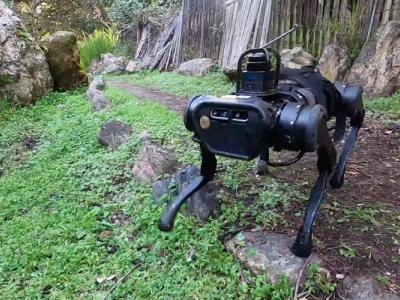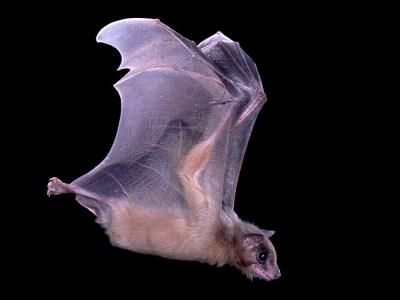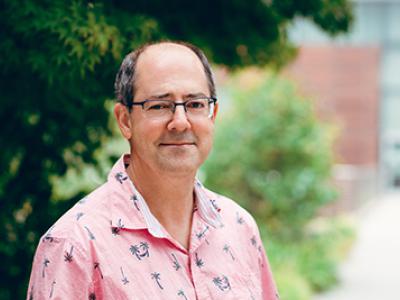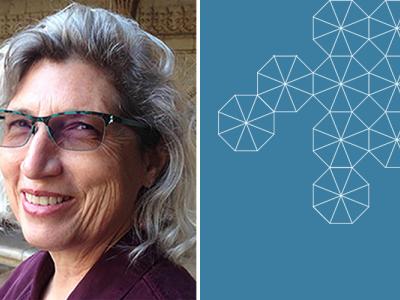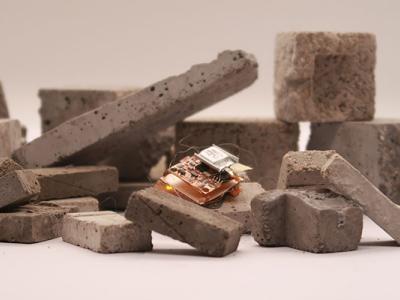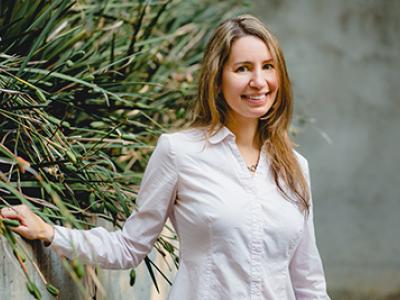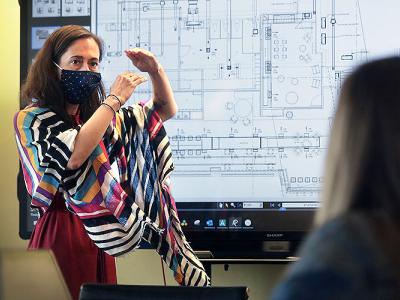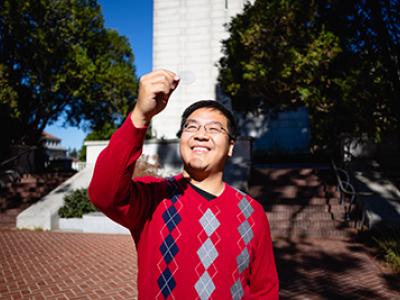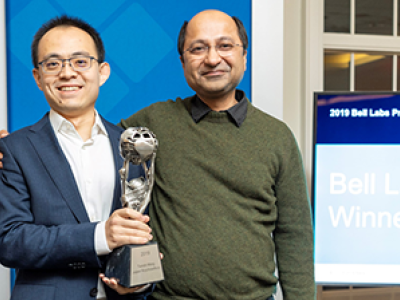Delivery services may be able to overcome snow, rain, heat and the gloom of night, but a new class of legged robots is not far behind. Artificial intelligence algorithms developed by a team of researchers from UC Berkeley, Facebook and Carnegie Mellon University are equipping legged robots with an enhanced ability to adapt to and navigate unfamiliar terrain in real time.
Research News
Learn more about UC Berkeley's researchers and innovators.
Showing 977 - 992 of 3459 Results
When driving up to a busy intersection, you probably pay more attention to where you will be in the near future than where you are at that moment. After all, knowing when you will arrive at the intersection — and whether you need to stop or slow down to avoid a collision with a passing car, pedestrian or cyclist — is usually much more important than knowing your current location.
This ability to focus on where we will be in the near future — rather than where we are in the present — may be a key characteristic of the mammalian brain’s built-in navigation system, suggests a new study appearing online Thursday, July 8, in the journal Science.
Kristofer Pister leads research to embed microbatteries directly into sensor circuitry, providing a built-in power source instead of an external one. The technology could shrink circuit boards to make the sensor, microprocessor and battery all one unit that can speak to the internet.
Technology had been evolving steadily, and the millennial generation was already emerging as a powerful influence in the American knowledge workforce. But since the COVID-19 pandemic hit, American businesses have been forced to adapt or face disaster.
In episode 118 of Berkeley Talks, Linda Rugg, associate vice chancellor for research at UC Berkeley, discusses the measures being taken to repatriate Native American ancestral remains and sacred artifacts held by the university.
Many insects and spiders get their uncanny ability to scurry up walls and walk upside down on ceilings with the help of specialized sticky footpads that allow them to adhere to surfaces in places where no human would dare to go.
Engineers at the University of California, Berkeley, have used the principle behind these some of these footpads, called electrostatic adhesion, to create an insect-scale robot that can swerve and pivot with the agility of a cheetah, giving it the ability to traverse complex terrain and quickly avoid unexpected obstacles.
Maria Paz Gutierrez has begun to explore the potential of using lichens rather than plants as living air purifiers, and installing them along interior walls, rather than exterior walls. With support from the Bakar Fellowship Program, Dr. Gutierrez aims to fabricate small-scale “lichen building blocks” and test their capacity to purify indoor air. She describes her unorthodox approach and what drew her to it.
Going to work used to be so simple. Across a span of decades, in organizations large and small, American white-collar workers by the millions would wake up in the morning and get to the office by 8 or 9. They would leave at 5 or 6, perhaps later if they were on deadline with an important project. It was like clockwork.
Suddenly, however, that model seems outdated, if not archaic. In a series of interviews, Berkeley scholars who study work and management say that as the COVID-19 pandemic eases, American executives and office workers are emerging into a new and unfamiliar world that may have broad benefits for both.
For more than a decade, Joel Moskowitz, a researcher in the School of Public Health at UC Berkeley and director of Berkeley’s Center for Family and Community Health, has been on a quest to prove that radiation from cellphones is unsafe. But, he said, most people don’t want to hear it.
Bakar Fellow Norman Yao, Assistant Professor of Physics, has overcome conventional limitations with the invention of the NV-DAC, which directly integrates a thin layer of NV center sensors into a diamond anvil tip. With this invention, Yao and his group have been able to obtain highly sensitive and localized DAC measurements of a sample material’s properties under enormous pressure over a wide range of temperatures.
Russell Vance, PhD, Professor of Immunology and Pathogenesis in the Department of Molecular and Cell Biology, studies the immune system’s production of Interferons, a type of protein that normally helps trigger the immune response to viruses. With support from the Bakar Fellowship Program, he is developing a way to disable cancer’s ability to block interferon production.
Astronomers have found convincing evidence that supernovae come in a third flavor, powered by a long-suspected explosive mechanism that may explain a bright supernova humans observed 1,000 ago and that birthed the beautiful Crab Nebula.
Bakar Fellow Jaijeet Roychowdhury led a breakthrough that enables combinatorial optimization problems involving millions of possible outcomes to be solved with quantum computer-type speed and efficiency using conventional Complementary Metal–Oxide–Semiconductor (CMOS) integrated circuitry.
A new paper in JAMA Network Open, written by Berkeley Public Health Professor of Community Health Sciences Barbara Laraia, PhD, MPH, RD, Anil Aswani, PhD, associate professor of industrial engineering and operations research at UC Berkeley, and Matt Olfat, PhD, of Citadel LLC, finds that SNAP (the Supplemental Nutrition Assistance Program, commonly known as food stamps) recipients who had more available time were able to prepare higher quality meals, which reduced sodium consumption for them and their families.
While the American public may have a broader understanding of the experiences of people who are transgender, non-binary and gender-nonconforming, violence against these communities — in the form of killings and prejudiced American policy — has continued to rise.
Rikky Muller, Assistant Professor of Electrical Engineering and Computer Science, has refined the physical comfort of EEG earbuds and has demonstrated their ability to detect and record brain activity. With support from the Bakar Fellowship Program, she is building out several applications to establish Ear EEG as a new platform technology to support consumer and health monitoring apps.

